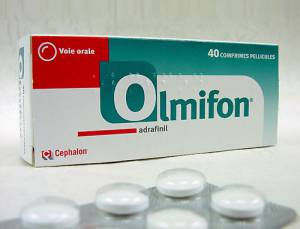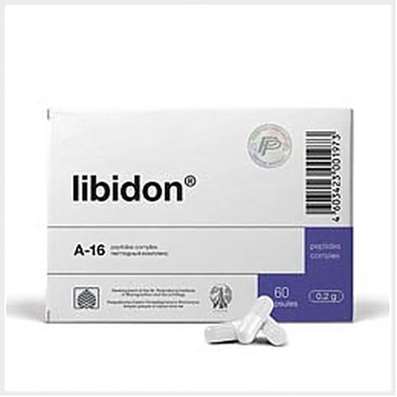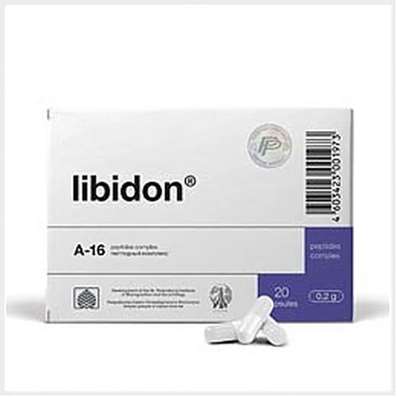Adrafinil (Olmifon)
11 Jan 2017
Pharmacological group: stimulants
Systematic (IUPAC) name: (RS) -2-benzidril-sulfinyl-ethane-hydroxamic acid
Application: oral
Bioavailability: 80%
Metabolism 75% liver
half-life of 1 hour
Excretion: Kidney
Formula: C15H15NO3S
Mol. weight: 289.351 g / mol
Adrafinil (CRL-40028, Olmifon) is a mild stimulant of the central nervous system, which is used to relieve excessive sleepiness and inattention in elderly patients. It is also used by some people off-label to relieve fatigue, such as night workers or others who need to keep fit for long periods of time. Adrafinil is a prodrug; in vivo it is metabolized in the modafinil and the latter has an almost identical pharmacological effects. Unlike modafinil, however, for the accumulation of the active metabolite levels in the circulation it requires more time. The effects of the drug usually occur within 45-60 minutes when taken orally on an empty stomach. Adrafinil not currently approved by the FDA and, therefore, is not a regulated drug in the United States. Until September 2011, the drug was sold in France and in other European countries under the brand name Olmifon, when FDA equivalent organization in France withdrew permission for marketing the drug. Adrafinil is so-called a precursor substance modafinil; This means that adrafinil metabolized in the body to produce modafinil. They both are stimulants without any amphetamine effects.

General information
Adrafinil - a synthetic nootropic compound. It is a prodrug for modafinil, and hence, the use of modafinil increases adrafinila concentrations in the body. Use adrafinil increases the activity and vigor. Adrafinil is a stimulant, which does not cause hyperactivity. Instead, the drug helps combat sleepiness. Use adrafinila can also improve memory, but to confirm this effect it is necessary to conduct additional studies. Adrafinil acts vicariously through modafinil. Further studies are needed to determine the exact mechanisms of action of modafinil, but preliminary data suggest that histaminergic effects plays a vital role. adrafinil security information is limited because it is often used instead of modafinil, for example, in the treatment of narcolepsy and excessive daytime sleepiness. Long-term use of adrafinil not recommended, since it is metabolized in the liver, modafinil, and there is no accurate data on the effect of the liver is not today. Adrafinil and modafinil is prohibited by the World Anti-Doping Agency as non-specific stimulants. Other names: Olmifon, CRL-40028 Not to be confused with modafinil. It is worth noting
Adrafinil classified as a non-specific stimulant; banned by WADA in Section 6 list of prohibited substances in 2014;
Because of the stimulating action and a long half-life, adrafinil should be taken in the morning for a good sleep.
It is a nootropic.
Adrafinil: instructions for use
Standard Adrafinil dosage is 600-1200 mg, for the treatment of narcolepsy take medication at a dose of 600 mg twice a day (morning and noon) or 600-900 mg once a day immediately after awakening. Adrafinil no longer used for this purpose, as a modafinil pharmaceutical point of view is more appropriate drug; these dosages reflect the recommendations of Olmifon instructions when he was still available. Adrafinil should not be taken in the afternoon and evening, as this may worsen the quality of sleep. Adrafinil usually use three times a week course of no more than five months. You can also like Cerebrolysin.
History
Adrafinil was developed in the late 1970s, scientists working with the French pharmaceutical company Group Lafon. For the first time the drug was released in France in 1986 as an experimental treatment for narcolepsy, but later developed Lafon drug modafinil, the primary metabolite of Adrafinil. Modafinil is more selective alpha-1 adrenergic activity than Adrafinil without showing many common side effects Adrafinil (stomach pain, skin irritation, and anxiety (with prolonged use), increase in liver enzymes). Makers Adrafinil for a long time, be sure to have regular check liver function. As of September 2011, Cephalon has stopped Olmifon production.
Sources and structure
sources
Adrafinil (diphenylmethyl) sulfinyl-2 acetohydroxamic acid, until recently, sold under the tradename Olmifon, is a prodrug stimulant modafinil; is a synthetic substance not found in food. Due to the absence of amphetamine-like stimulant effects adrafinil classified as egregorny agent (the agent that causes wakefulness and alertness) .1) Adrafinil is sometimes used as a stimulant atletami2), despite the fact that its use is prohibited or at sporting events. World Anti-Doping Agency is currently made adrafinil the list of banned substances, classifying it as a "non-specific stimulator." Adrafinil is a synthetic prodrug of Modafinil, which was previously sold under the trade name Olmifon. It is prohibited for use during sports activities World Anti-Doping Agency due to its stimulant properties.
Structure
Adrafinil structurally very similar to its chemical "relative" and bioactive metabolite of modafinil. The only structural difference is that the terminal hydroxyl group of the amide adrafinil (diphenylmethyl) sulfinyl-2 acetohydroxamic acid) is absent from modafinil (diphenylmethyl) sulfinyl acetamide-2).
Pharmacology
Serum
In rats of 20 mg per kg of body adrafinil oral administration caused Tmax four hours after ingestion, reaching Cmax at 60 micrograms per ml. Half-life adrafinil at this dosage was 4.95 hours, and was detected in the serum after 7 hours after oral administration. In elderly people single dosage of 900 mg adrafinil reached its peak after an hour in the blood, although adrafinil neurological effects were only active for one hour, after which it was observed its transformation into modafinil. Adrafinil reaches peak blood elderly after approximately one hour after oral administration, although neurological effects occur after overcoming this peak, as a certain time is necessary to convert it into modafinil, its active metabolite. Adrafinil has a half-life of about five hours on the basis of evidence from studies in rats.
Metabolism
Adrafinil oral use can take place in one of two metabolic steps. The main metabolite - an active modafinil, which is itself metabolized into an inactive modafinil acid. Adrafinil can also be metabolized into an inactive modafinil acid without turning into modafinil. The resulting modafinil can also be metabolized into an inactive second product, namely, modafinil sulfone in, but only after the gain of modafinil adrafinila. Adrafinil can be metabolized in the modafinil, which is then metabolized into inert modafinil acid and modafinil sulfone. Adrafinil can also directly metabolized in the modafinil acid, modafinil without elaboration.
Extraction
Just as in the case of modafinil, urinary metabolite adrafinila - modafinil acid is, although adrafinil removal from plasma more rapidly than its metabolite any. The only possible way to differentiate the two substances in the urine - the definition of the parent compounds in blood plasma or urine. Modafinil, in itself, can be determined in the urine due to the presence of GC-MS, LC-MS and is used for the "parent" adrafinil. While GC / MSD defines one artifact for modafinil and modafinil acid adrafinil, LC-MS / MS method can individually identify each of the three compounds. Research based on the response to the dosage spent on dogs showed that after 10 hours the levels adrafinil serum associated with high dose compound (50 mg per kg body weight) were lower than those at low dosage (10 mg per kg of body weight body) (although not essential), the average dose (30 mg per kg body weight) had the best performance. Two hours later, adrafinil dose-dependent manner showed an increase in their serum concentrations. The authors hypothesized that high doses can cause excretion or metabolism adrafinil a greater extent than when using low doses. Adrafinil Elimination from the body is parallel with modafinil through urine.
Neurology
andrenergic neurotransmission
The mechanism of action adrafinil, apparently tied to the postsynaptic alpha-andrenergic activity, because the increase in traffic caused by adrafinil blocked by prazosin (alpha 1 antagonist), yohimbine (alpha2 antagonist) or phenoxybenzamine (mixed alpha antagonist). This was confirmed in another study using mice shaky (for example for assessing adrenergic synapse), which noted that the beneficial effects of prazosin adrafinila blocked. It is believed that adrafinil acts centrally in the absence of promotion salivary viscous secretion, which should occur in the activation of peripheral alpha 1 antagonist. Its effect is in reducing the secretion of pancreatic fluid can be associated with a reduced stimulation of the vagus nerve of the pancreas. Adrafinil or its active metabolite (modafinil), can act on alpha-adrenergic receptors (data from animal studies). It was noted that blocking the synthesis of catecholamines (together with alpha-methyl tyrosine) does not interfere with the action of adrafinil, providing further evidence of the differentiating action adrafinil Unlike other amphetamine-like stimulants.
Insomnia
Oral adrafinil use in animal studies, is known to increase their activity (measured by locomotion) at dosages of 64 mg per kg of body weight to 256 mg per kg of body weight in myshey.8) adrafinila effects are dependent on the dosage and period of use in dogs. When testing nocturnal activity in monkeys revealed that the dosage of 60 mg per kg body weight can double the activity already after the second dose, and the dose of 90-120 mg per kg body weight of heightened activity four times after the first reception. Increased locomotion in animals is considered increases wakefulness, rather than the lack of amphetamines due to induction of anxiety in dogs indicated the persistence of such efficiency in the course of 33 days (20-40 mg per kg of body weight) .9) It is assumed that adrafinil- induced increase in locomotion is secondary to an increased sense of vigor, there is also a significant increase in locomotion when testing nocturnal activity in monkeys. Furthermore, in the investigation of bioactive metabolite of modafinil, it failed to reveal an increase in locomotion during testing only waking period, while at night time the study was revealed a positive trend. Adrafinil form in a dose-dependent increases locomotion in rats, indicating a stimulatory effect. Since adrafinil does not produce disturbing effects and has great efficiency during periods of sleep of animals, it is assumed that the second adrafinil affects locomotion with respect to the promotion of wakefulness.
Safety and Toxicology
general information
In the rat oral use for one month of 400 mg per kg of body weight or 200 mg per kg of body weight for three months showed no signs of toxicity. LD50 values vary among species studied mice are made of 1250 mg per kg body weight and 3400 mg per kg of body weight in rats. Attempted suicide in a person to use an excessively high dose of modafinil (4500 mg single) cause insomnia and other side effects that could prevent 24 hours after hospitalization.
Examples
Using adrafinil at a dosage of 900 mg daily for ten months has caused the development of orofacial dyskinesia without tremors, or other symptoms of Parkinson's, which did not disappear even four months after the abolition of taking the drug; improvement occurred after use tetrabenazine agent destroys dopamine. This side effect is manifested in the use of modafinil, so adrafinil-induced orofacial dyskinesia may be associated with the transformation in after taking modafinil. Notably, in the event that the patient use of modafinil had several medical problems that may reduce clearance of modafinil, which may lead to the development of orofacial dyskinesia. Practical examples show that adrafinil modafinil and capable of inducing orofacial dyskinesia, which may persist even after cessation drugs. This phenomenon is usually associated with impaired metabolism of modafinil and, consequently, a decrease in clearance.
Legal status
Sports doping
In 2004 Adrafinil and its active metabolite of modafinil have been included in the list of substances prohibited for use when participating in athletic competitions, in accordance with the Code of the World Anti-Doping Agency.
USA
In the United States, Adrafinil is currently unregulated substance. It has not been approved for any US FDA clinical applications. Unlike modafinil, Adrafinil is not classified as a controlled substance and is not subject to the jurisdiction of the DEA; in particular, possession without prescription is not a drug, and the drug may be imported by citizens in private.
Canada
In Canada Adrafinil is not regulated and is available for purchase in the country as a research chemical and can be imported by citizens in private.
New Zealand
In 2005, the Medical Classification Committee recommended that New Zealand Adrafinil classified as a prescription drug. "As a result of growing concerns about increased imports and the possible abuse of the substance, Adrafinil was handed over to the commission on drugs trafficking control for classification as a prescription drug. Adrafinil is not regulated substance in New Zealand, but is chemically related to modafinil, a prescription drug that is taken orally with a decrease in mental functioning in the elderly. All participants agreed that Adrafinil should be classified as a prescription drug. "

 Cart
Cart





